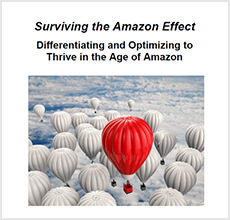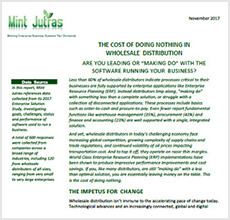Wholesale Distribution
Home / Wholesale Distribution
Evolve your wholesale distribution business with software built for the cloud.
Manage
Use supply chain portals for your vendor, customer and sales partners and get full control of the business flow.
Customize
Build your own business rules into NetSuite with SuiteFlow, allowing you to manage your company's unique requirements with the automation you need.
Connect
Reach customers online, by phone, over email, in person and more with omnichannel commerce. Exceed the evolving expectations of today's customers.
See NetSuite for Wholesale Distributors in Action
Leading Distributor Precision Disposables Implements NetSuite in Just 59 Days With
SuiteSuccess Methodology
Products Features
Order
Engage your customers everywhere and accept orders via phone, online, direct sales or EDI
Source
Leverage supplier and vendor relationships with complete visibility across the purchasing process.
Warehouse
Track inventory movements and transactions in real-time. Optimize day-to-day warehouse operations.
Fulfill
Deliver on time, every time. Exceed your customers’ expectations while minimizing shipping costs.
Market
Reach new markets through campaign management, marketing automation, and detailed analytics.
Sell
Maximize sales across your organization with high visibility into opportunities, pipeline and pricing.
Engage with Commerce
Connect every part of your business to your company’s core objective.
Leading Practices for Wholesale Distributors
Solutions to Fit Your Needs
Blurring of the Lines Between Manufacturers, Distributors and Retailers
Calculating the Real Cost of an Ecommerce Solution
Should you choose an all-in-one or point ecommerce solution? Retailers selecting an ecommerce platform must
look beyond the initial cost and focus on the total cost of ownership to understand the real return on investment.
look beyond the initial cost and focus on the total cost of ownership to understand the real return on investment.
Surviving the Amazon Effect
Amazon is disrupting the wholesale distribution industry by raising the bar on delivering on customer
expectations for things like frictionless commerce, a personalized shopping experience and free shipping.
Businesses who do not adapt to this changing business landscape are at risk of becoming obsolete. What are
actionable ways to stay competitive? Access this free report for 5 tips on optimizing your distribution business to
survive ‘The Amazon Effect.’
expectations for things like frictionless commerce, a personalized shopping experience and free shipping.
Businesses who do not adapt to this changing business landscape are at risk of becoming obsolete. What are
actionable ways to stay competitive? Access this free report for 5 tips on optimizing your distribution business to
survive ‘The Amazon Effect.’
The Cost of Doing Nothing in Wholesale Distribution
Less than 60% of wholesale distributors report critical business processes are supported by enterprise
applications like Enterprise Resource Planning (ERP). Instead, distributors make do with something less than a
complete solution or struggle with a collection of disconnected applications.
Access this report to understand the performance improvements and cost savings a leading ERP solution
provides to distributors, and to truly understand the cost of sitting on an ERP decision or “the cost of doing
nothing”.
applications like Enterprise Resource Planning (ERP). Instead, distributors make do with something less than a
complete solution or struggle with a collection of disconnected applications.
Access this report to understand the performance improvements and cost savings a leading ERP solution
provides to distributors, and to truly understand the cost of sitting on an ERP decision or “the cost of doing
nothing”.
















































